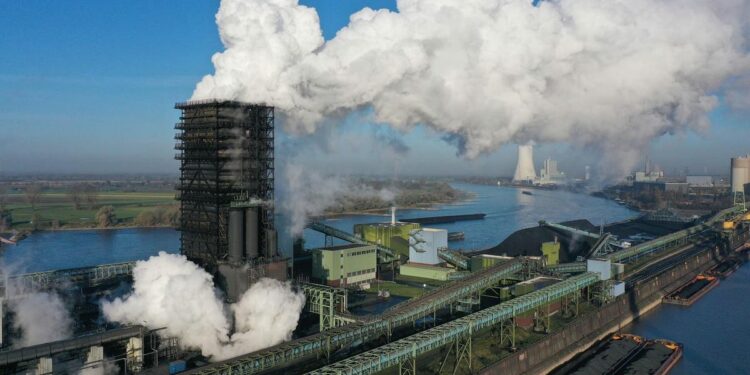Greenhouse gases are the “apples” in the climate warming apple pie. That statement is likely causing some puzzled looks. The overly-literal reader will continue to be puzzled, but hopefully, most readers recognize the analogy after reading the essay. This week the National Oceanic and Atmospheric Administration (NOAA) announced that Greenhouse gas (GHG) pollution associated with anthropogenic (human) activities “trapped” 49% more heat in the atmosphere in 2021 than it did roughly 30 years ago. What does that information (and my pie analogy) mean?
Since 2006, NOAA has released the Annual Greenhouse Gas Index (AGGI) to track the warming associated with GHGs like methane, carbon dioxide, nitrous oxide, chlorofluorocarbons, and 16 additional chemical constituents. According to the NOAA press release, “The AGGI converts the complex scientific computations of how much extra heat these gases capture into a single number that can easily be compared to previous years and tracks the rate of change.” The AGGI is compared to 1990 because it was the first year that the Intergovernmental Panel on Climate Change (IPCC) scientific assessment was published. It is also the baseline year for the Kyoto Protocol, according to NOAA.
The first AGGI in 2006 was benchmarked to the start of the Industrial Revolution. Around 1750, the world figured out that it could burn fossil fuels for societal advancement (but at a price to our climate system we would later learn). The AGGI value was zero in 1750 and 1.0 in 1990. The value in 2021 was 1.49, which means a nearly 50% increase since 1990. NOAA’s press release notes, “Because it is based primarily on highly accurate measurements of greenhouse gases in air samples collected around the globe, the result contains little uncertainty.” As expected, carbon dioxide (CO2) is the primary culprit, and it lingers for more than 1,000 years. NOAA data indicates that CO2 is also the largest contributor to trends, rising 61 ppm since 1990 (414.7. ppm in 2021). Anthropogenic activities are strongly tied to these trends and explain why much of the mitigation discussion centers on CO2 reductions.
Methane has been growing rapidly as well and is 162% greater than pre-Industrial Revolution levels. Methane is not as abundant as CO2 but is the second-most important GHG. NOAA’s press release acknowledges, “Changes in isotopic composition of atmospheric methane over time point to microbial sources, likely from wetlands, agriculture and landfills, as the dominant driver” though anthropogenic sources also contribute. The third GHG contributing to warming is Nitrous oxide, or N2O (yep, you probably know this one from a visit to the dentist’s office). Beyond dental usage, it is heavily used in fertilizer and can be quite long-lived in the atmosphere. The increasing trends in N2O are driven by the expanding population footprint and associated demands for food (agriculture), nice lawns, and recreation. The aforementioned three gases account for about 96% of the excess heat in our atmosphere.
Ok, this gets me back to the “climate apple pie.” Climate scientists are often challenged with narratives about aerosols, land use change, clouds, solar variability, and so on as the dominant processes in climate warming. Nope, those things are the “cinnamon” or “salt” in the pie. They are important but not the dominant ingredient. GHGs are the “apples.” And by the way, I am also aware of the “but what about water vapor?” rebuttal. Water vapor is a GHG. However, it condenses and cycles in our atmosphere within days (not years). An article that I wrote in 2016 further discussing the water vapor – CO2 “thing.”
Now where’s the ice cream?











